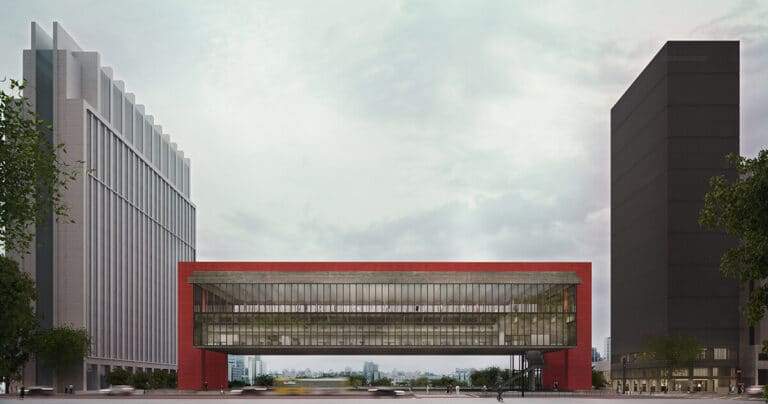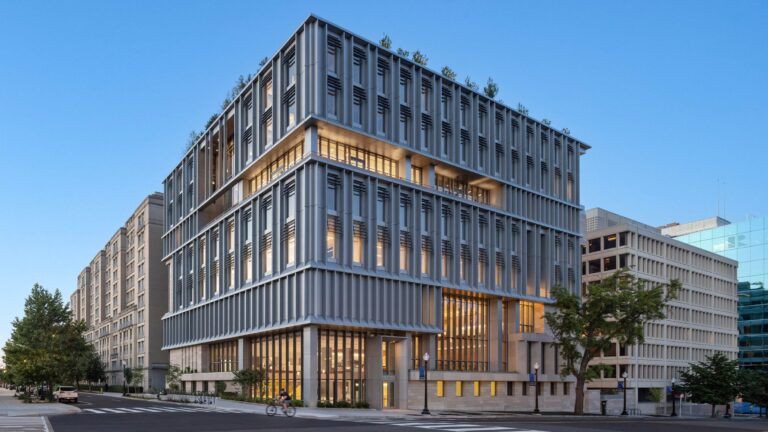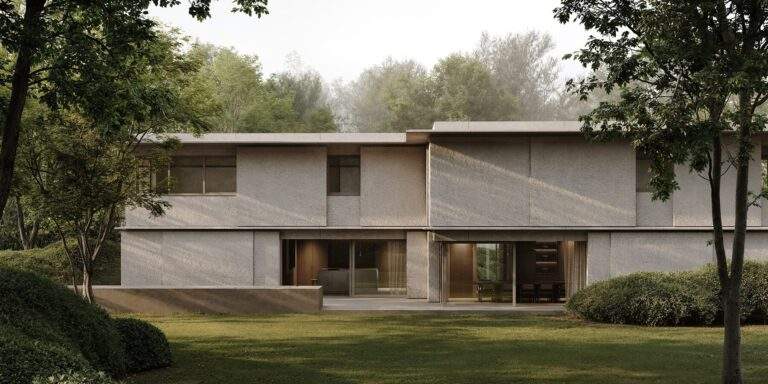Urban Foxes Invade Google HQ in King’s Cross by BIG and Heatherwick
In an unusual twist blending urban wildlife with cutting-edge architecture, foxes have been reported burrowing into the rooftop gardens of the new Google HQ in King’s Cross, London. Designed by BIG (Bjarke Ingels Group) and Heatherwick Studio, the 11-storey, 330-meter-long building—dubbed the “landscraper”—is currently nearing completion and features a heavily landscaped rooftop that has inadvertently attracted a skulk of foxes.
Despite their presence, Google has clarified that the animals are causing minimal disruption to the project’s progress. The green roof, which includes 250 trees and 40,000 tonnes of soil, is one of the development’s most ambitious and ecologically sensitive elements. Woven around a running track and communal spaces, the garden represents a broader push toward biophilic and sustainable design in dense urban environments.
For anyone looking for a reliable and up-to-date architectural resource, ArchUp offers fresh content covering projects, design, and competitions.
Foxes on Site: A Natural Encounter
Wildlife encroachment is not entirely uncommon in high-profile urban builds. This isn’t the first time foxes have taken up residence in a skyscraper under construction. During the building of The Shard, a fox named Romeo famously occupied its 72nd floor. In Google’s case, contractors and workers have seen foxes moving across multiple levels of the building, particularly in the absence of human activity.
Their burrows have been spotted across various landscaped areas, with one particularly elusive fox reportedly moving between the fifth and ground floors. Pest control experts suggest the foxes are attracted by leftover food from construction workers and the abundance of rodents on site—both typical elements of city construction zones.
Designing the Landscraper: A Mega-Roof Garden
The design by BIG and Heatherwick reflects a shift toward horizontal urban development. Spanning 330 meters in length, the Google HQ is longer than the Shard is tall. The idea was to emphasize horizontal connectivity and integration with the urban grain, especially in a densely built area like King’s Cross. The 300-meter-long rooftop not only maximizes green space but creates a public-private buffer zone for fitness, relaxation, and informal work settings.
This roof is more than an aesthetic flourish—it’s a deep technical achievement. The soil load, integrated irrigation systems, and tree placement all required careful structural consideration. Ironically, it’s this sensitivity to the natural environment that has made the building hospitable to urban wildlife.

Practical Challenges: Foxes and Flooding
While the presence of foxes may be a charming anecdote, the site has faced more serious construction issues. According to reports, the building’s timber floors were severely water-damaged after rainfall, necessitating significant repairs. A worker on-site even remarked that finishing by 2026 would be “a miracle.” Such challenges illustrate the complexity of large-scale sustainable architecture, especially when balancing innovation with durability.
Despite these setbacks, the building is still anticipated to be a landmark in urban design. It will be Google’s first wholly-owned campus outside the U.S., and a symbol of long-term investment in London’s digital economy.
✦ ArchUp Editorial Insight
This article frames the intersection between urban architecture and unexpected ecological interactions at the Google HQ in King’s Cross by BIG and Heatherwick. The visuals evoke layers of manicured greenery, natural textures, and monumental horizontal form. Yet, while the project’s ecological intention is compelling, the article invites deeper inquiry into how high-profile developments truly integrate wildlife resilience into their systems. Can a building designed for human wellness also offer unintended sanctuary for urban fauna? The narrative offers an unexpected perspective on biophilic design—one grounded not just in aesthetic intention but spontaneous occupation. This evolving dynamic underscores how even controlled architectural environments remain porous to the unpredictability of nature.
Conclusion
The foxes at Google’s King’s Cross HQ might seem like a humorous anecdote, but they spotlight the unintentional consequences of green design in the urban realm. As cities continue to embrace rooftop landscapes and biophilic principles, the boundaries between natural and artificial environments become increasingly blurred. Projects like this prompt valuable discussions about coexistence, maintenance, and long-term resilience.

Explore More with ArchUp
ArchUp documents the evolving profession of architects worldwide, from career insights and research to project profiles and industry news. Our editorial team publishes global salary trends, career advice, and opportunities for emerging talents. Learn more on our About page or Contact us to collaborate.
The photography is by Lizzie Crook.







